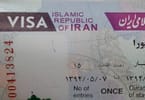(eTN) – Much has been written, debated, and publicized about the meteoritic growth in tourism in post-war Sri Lanka. Whatever the case may be, there is no doubt that in the short to medium term. Sri Lanka is going to show strong growth in tourism. With HE the President setting an ambitious goal of 2.5 million tourists by the year 2016, and the rich peace dividends that the tourism industry in particular is reaping today, everyone seems to be jumping on the tourism band wagon. According to reports, there are some 34 new tourism hotel projects in the pipeline amounting to an additional 3,500 or more rooms, while another 1,200 or so, are now already under construction and will open soon.
Late last year, the government requested the private sector to present their views on the future of Sri Lanka Tourism, and a document titled “The Way Forward … Private Sector Perspective” was developed and presented to the government.
While the actual number of rooms required to meet the 2016 influx, might vary somewhat depending on the market mix that is being targeted, the fact of the matter is that total direct and indirect employment in the tourism industry will easily surpass 1 million, if the country even gets close to these targets in 2016. Currently, only about 55,000 people are directly employed in the industry, while at least another three times as much are employed in the informal sector, making a total of about 220,000 persons employed, directly or indirectly, in the industry.
Unlike in other industries, the informal sector serving the tourism industry is very large. There is a wide range of peripheral service providers such as guides, chauffeurs, ticketing agents, travel agents, transport providers, etc., who come in contact with visitors and play an important role in the supply chain. All these service providers also have to be trained and developed if Sri Lanka Tourism is to continue to retain its competitive edge.
Hence, the bottom line is that from a current direct and indirect employment figure of about 220,000 persons, the number will have to reach over 1 million by 2016. By any yardstick, quadrupling the employment over 4 years is a huge challenge.
Hence, while everyone is scurrying around trying to develop infrastructure and build more hotel rooms, this critical human resources (HR) factor is a hidden issue that will soon mushroom into a great crisis later on if not addressed immediately.
While certainly building hotel rooms and infrastructure requires time, training and development of proper staff for the tourism industry also definitely takes time. Given the competitive nature of today’s tourism industry, quality training and professionalism of staff will have a major impact on the competitiveness of the destination.
Hospitality vs. Professionalism
One serious error that the Sri Lankan tourism industry makes is mixing up “hospitality” with “service professionalism.” While certainly a warm smile is always welcome, in today’s competitive climate, on its own, the smile is not adequate. Travelers need high quality and efficient service standards, which no amount of “hospitality” alone can substitute for. Hence, hospitality today has to be tempered and augmented with good professionalism as well.
HR tourism is are burdened with the “mediocre is acceptable mentality.” Very often staff makes do with less than perfection, accepting lower service levels, and not striving to deliver the best. The concepts “Do it right the first time” (DRIFT) and “Quality Always on Time” (QuAT) are often alien to the service industry (in general) in Sri Lanka.
Quality and Quantity
Training and development of staff for the tourism trade is a complex task, particularly in a Sri Lankan context. It is not only job skills that needs to be developed and inculcated, but professionalism also has to be “taught.” For example, in more developed countries, basic on-the-job skills training is the only input required, where, very often one finds students working as temporary hands in the professional areas of the tourism industry during rush periods (as in banquets). However, there is a large cultural divide in what is perceived as service quality in an affluent western culture, compared with what the average Sri Lankan suburban and village population thinks. This means that one has to often provide not only on-the-job skills training but also training in fundamental grooming and cleanliness skills as well. How often do we see waiters, even in 5-star hotels in Colombo, with dirty collars, crooked bow-ties, dirty finger nails, body odor, etc.
This is no fault of theirs, nor is it anything derogatory – it is just that the average person in Sri Lanka would not know how to wear a tie properly, nor be particularly mindful of being well-groomed and well-manicured. Our culture also does not drive the quality ethic in our day-to-day work. Getting it right the first time is often not considered important, and re-work is often the norm.
So, therefore, grooming, training, and developing proper tourism service professionals will take time.
Current Tourism Education in Sri Lanka
Currently we have only the Sri Lanka Institute of Tourism and Hotel Management (SLITHM) as the only national level tourism educational institute in Sri Lanka. That, too, is currently in a state of decline where the quality of education needs substantial improvement.
The SLITHM Colombo School and its 5 satellite schools together, has been producing only around 1,500 students bi-annually, but this year the intake has risen to 2,150 due to higher demand. There are also several mushroom private entities strewn around Colombo and other major cities, which offer so-called “courses” in tourism. They are not regulated, and like most of the other private tutories, are of very mediocre standard, except for a very few.
There are also national universities such as Uva Wellassa and Sabaragamuwa, which conduct degree courses in tourism. In each batch, of these 4 year-duration courses, there would not be more than 30–40 students, which means that the output from this channel will also be negligible. In any event, most of these graduates will have to fill higher-level positions such as in strategic planning and not at the front end of customer contact.
Hence, it is obvious that these few establishments, and the SLITHM, will be unable to produce the required numbers, let alone the quality required.
This is indeed a very serious, sad, and alarming situation. It does not take too much arithmetic to realize the enormity of the problem. Given the current maximum intake (and eventual output) of about 4,300 students per year from the SLITHM, it will take more than 100 years to produce the extra staff required for the industry! Even if we were to add another 1,500 per year from the mushroom private tutories, it will still take over 80 years!
The Tourism Industry as a Career
During the past few decades, Sri Lanka tourism was unable to attract good quality young people in to the industry because it was perceived that the tourism industry did not have any future. During my tenure as a board member of the SLITHM, a few years ago, I did a survey of the new intake for the certificate and intermediate courses and found that in some instances, the number of applicants were, even less than the total number of places available for the course (no demand for the study courses). More alarmingly, almost all the students who had applied had done so as a last resort, having exhausted all other avenues of education such as engineering, marketing, accountancy, IT, etc.
However, with the meteoric rise of tourism immediately after the war, there is tremendous interest and enthusiasm for the tourism industry. Suddenly, almost overnight, the tourism industry has been transformed into a vibrant and exiting industry, perceived as being able to provide lucrative career opportunities for young people. The industry has dramatically changed from a relatively low-wage-paying industry, to a medium-wage-paying one. Today, the service charge alone, (which is paid over and above the basic salary) is exceeding Rs.25,000 (US$226.51) per month in almost all the city hotels and several resorts as well.
The Sri Lanka Institute of Tourism and Hotel Management (SLITHM)
This interest level is clearly reflected in this year’s intake to the SLITHM. I am told that there were over 600 applications vying for not more than 80 places for some courses.
The SLITHM currently offers several courses of study. There is the Craft Level, practical-oriented training, in cookery, food and beverage, front office, and housekeeping operations.
In the same fields, there is a higher-level course at the Certificate Level, which leads to the Intermediate, and subsequently Advanced, level of studies. There is also a separate 3-year Management Diploma.
It is interesting to note that there is a relatively large interest seen from the provinces.
For the craft-level courses, the intake at the Koggala satellite school (32%) and Ratnapura schools (29%) are in the same order of that of Colombo (39%).
In the case of certificate courses, while Colombo is still the highest (30%), the schools of Koggala (20%) and Kandy (22%) are not too far behind.
Also it is quite intriguing to note that tourism studies seems to be the most popular in the deep south where the total intake (of both craft and certificate courses) for the Koggala school amounts to 441 , which is about 22% of the total. This may be attributed to the fact that the southern coast of Sri Lanka (where the largest numbers of hotel rooms are found) has maximum exposure to the tourism industry.
Reverse Brain Drain
No doubt with the recent success of the tourism industry, Sri Lanka is beginning to see a gradual reverse brain drain. From a total of 266,445 Sri Lankan expatriate workers, currently only a meager 20% constitute the skilled-level labor force, while the rest is the poor, lowly-paid house maids, regarding whom, the less is said, the better.
Even if we assume that about 35% of this skilled expatriate labor force is attached to the tourism industry, it would mean that only a minuscule 25,180 Sri Lankan tourism staff is currently working abroad. Even if all of them were to return to Sri Lanka, it will in no way help meet the demand.
How to Meet the Demand?
So what then is the solution? Hire expatriate staff from other Asian countries? This could be a bitter pill to swallow, but there certainly exists the possibility of obtaining suitable staff from countries such as Bangladesh, Philippines, and Indonesia. Some of these countries do have a reasonable good level of spoken English and as well as a good level of education and training. (I recollect many years ago visiting Bangladesh on business and finding out to my amusement that the Bell Captain of the five-star hotel I stayed in had an MBA qualification!)
The other more logical path to follow is to strengthen the private tourism education system instead of shutting it out of the mainstream. The state can regulate the policy and standardize tourism courses through the SLITHM and provide a curriculum base for private tourism education institutions to follow in training and developing staff. The SLITHM can, however, still continue to be the national level examining and certifying body.
Simultaneously, other foreign tourism educational institutes must be encouraged to set up education and training institutes in Sri Lanka. However, in this context one must guard against dilution or modification to the service delivery and hospitality ethos of Sri Lanka. One of Sri Lanka’s strong unique selling propositions (USP) is its warmth and genuine hospitality. No amount of growth should be allowed to in any way to damage this. However, “high tech” the industry may become, it will always remain a “high touch” industry, and in this context, training, development, and education in the tourism industry must always retain the local cultural flavor, and it should not be allowed to be superimposed with alien forms.
The writer of this article, Srilal Miththapala, is a senior tourism professional and was the former Chief Executive Officer of Serendib Leisure Management Ltd. and immediate past President of the Tourist Hotels Association of Sri Lanka (THASL). He also served on the board of the Sri Lanka Institute of Tourism & Hospitality Management. He is now attached to the Ceylon Chamber of Commerce as Project Director of the Greening Hotels SWITCH ASIA project and is a keen environmentalist and wildlife enthusiast.
WHAT TO TAKE AWAY FROM THIS ARTICLE:
- While the actual number of rooms required to meet the 2016 influx, might vary somewhat depending on the market mix that is being targeted, the fact of the matter is that total direct and indirect employment in the tourism industry will easily surpass 1 million, if the country even gets close to these targets in 2016.
- Currently, only about 55,000 people are directly employed in the industry, while at least another three times as much are employed in the informal sector, making a total of about 220,000 persons employed, directly or indirectly, in the industry.
- However, there is a large cultural divide in what is perceived as service quality in an affluent western culture, compared with what the average Sri Lankan suburban and village population thinks.






















